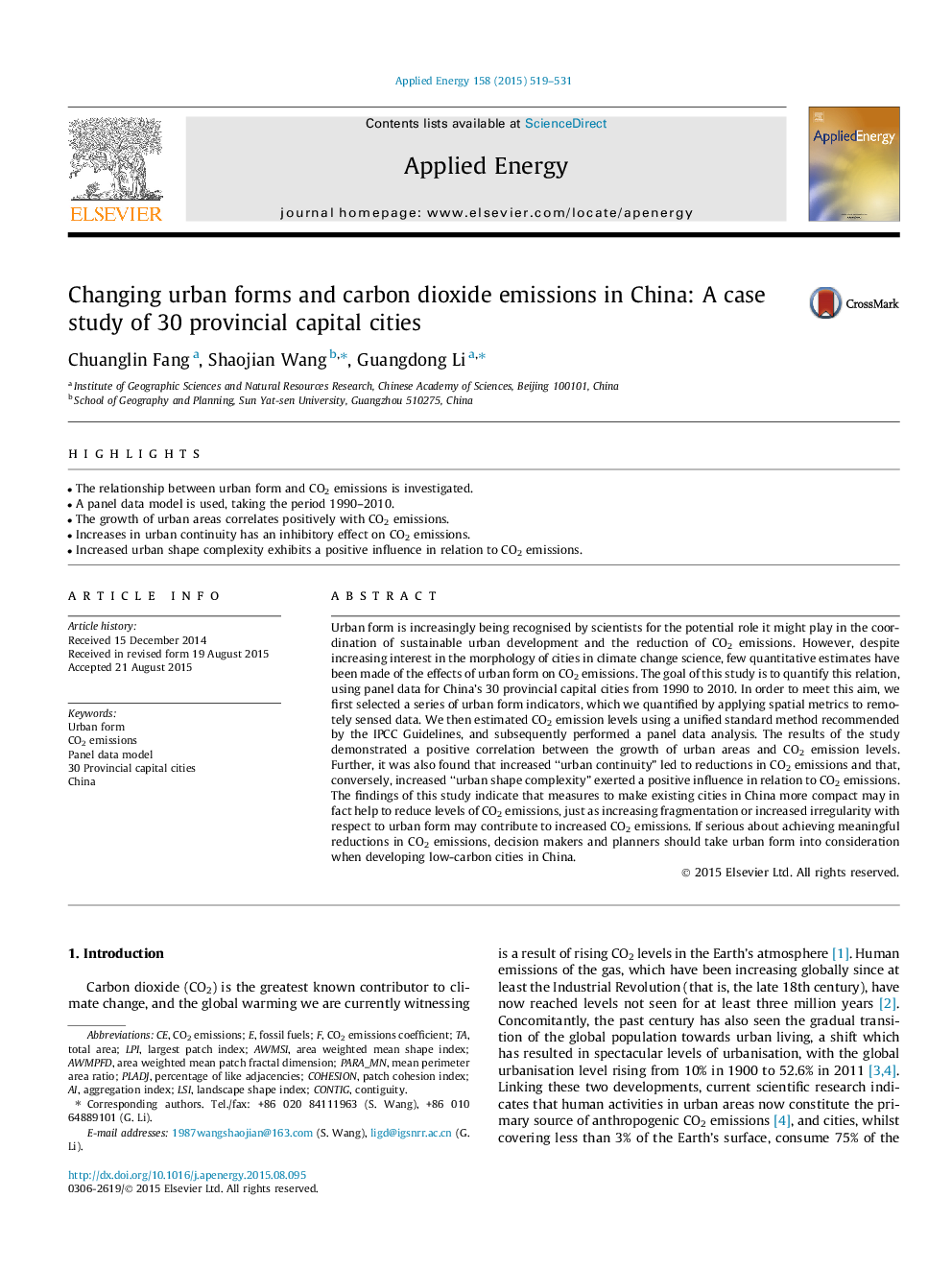| Article ID | Journal | Published Year | Pages | File Type |
|---|---|---|---|---|
| 6685782 | Applied Energy | 2015 | 13 Pages |
Abstract
Urban form is increasingly being recognised by scientists for the potential role it might play in the coordination of sustainable urban development and the reduction of CO2 emissions. However, despite increasing interest in the morphology of cities in climate change science, few quantitative estimates have been made of the effects of urban form on CO2 emissions. The goal of this study is to quantify this relation, using panel data for China's 30 provincial capital cities from 1990 to 2010. In order to meet this aim, we first selected a series of urban form indicators, which we quantified by applying spatial metrics to remotely sensed data. We then estimated CO2 emission levels using a unified standard method recommended by the IPCC Guidelines, and subsequently performed a panel data analysis. The results of the study demonstrated a positive correlation between the growth of urban areas and CO2 emission levels. Further, it was also found that increased “urban continuity” led to reductions in CO2 emissions and that, conversely, increased “urban shape complexity” exerted a positive influence in relation to CO2 emissions. The findings of this study indicate that measures to make existing cities in China more compact may in fact help to reduce levels of CO2 emissions, just as increasing fragmentation or increased irregularity with respect to urban form may contribute to increased CO2 emissions. If serious about achieving meaningful reductions in CO2 emissions, decision makers and planners should take urban form into consideration when developing low-carbon cities in China.
Keywords
Related Topics
Physical Sciences and Engineering
Energy
Energy Engineering and Power Technology
Authors
Chuanglin Fang, Shaojian Wang, Guangdong Li,
